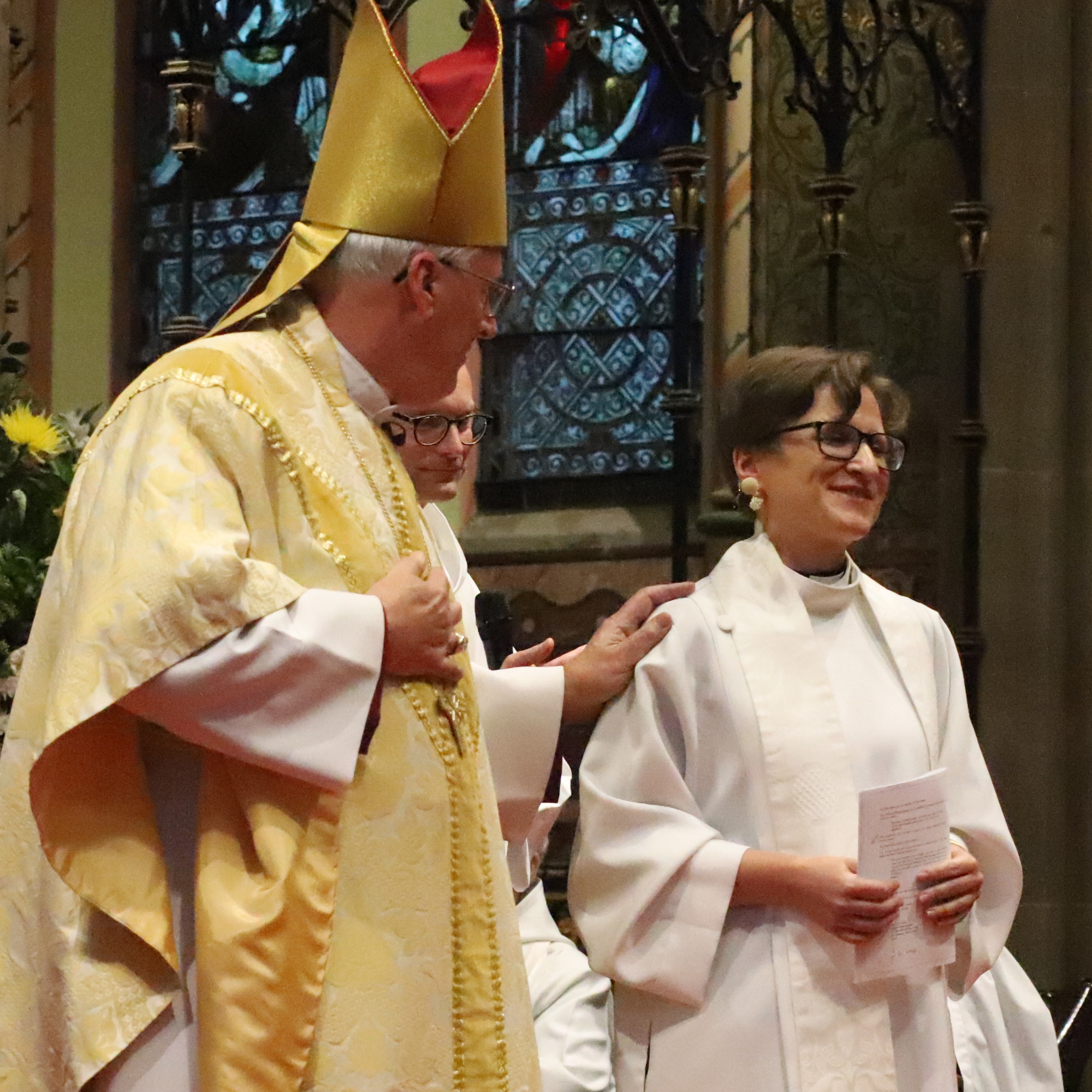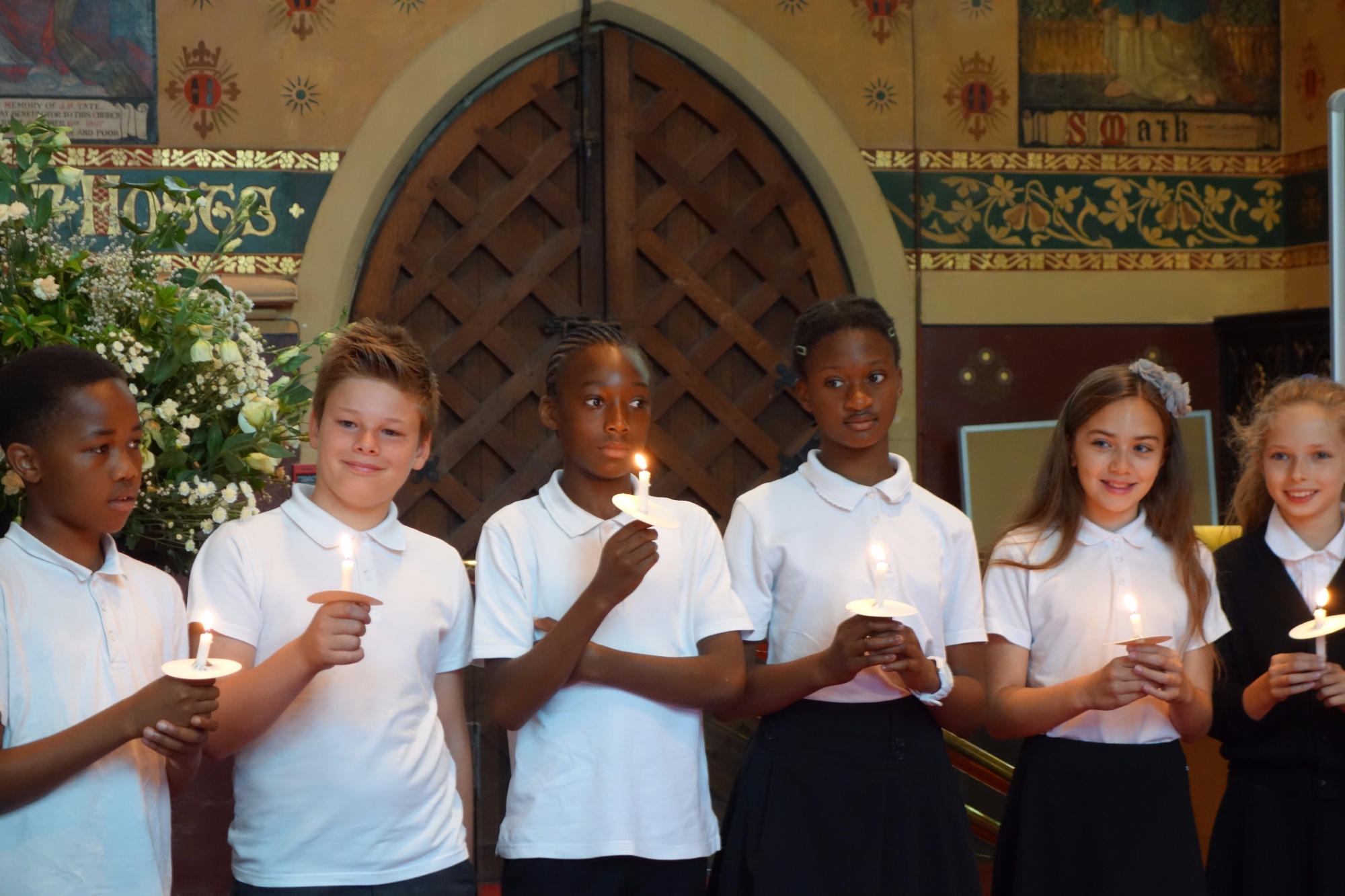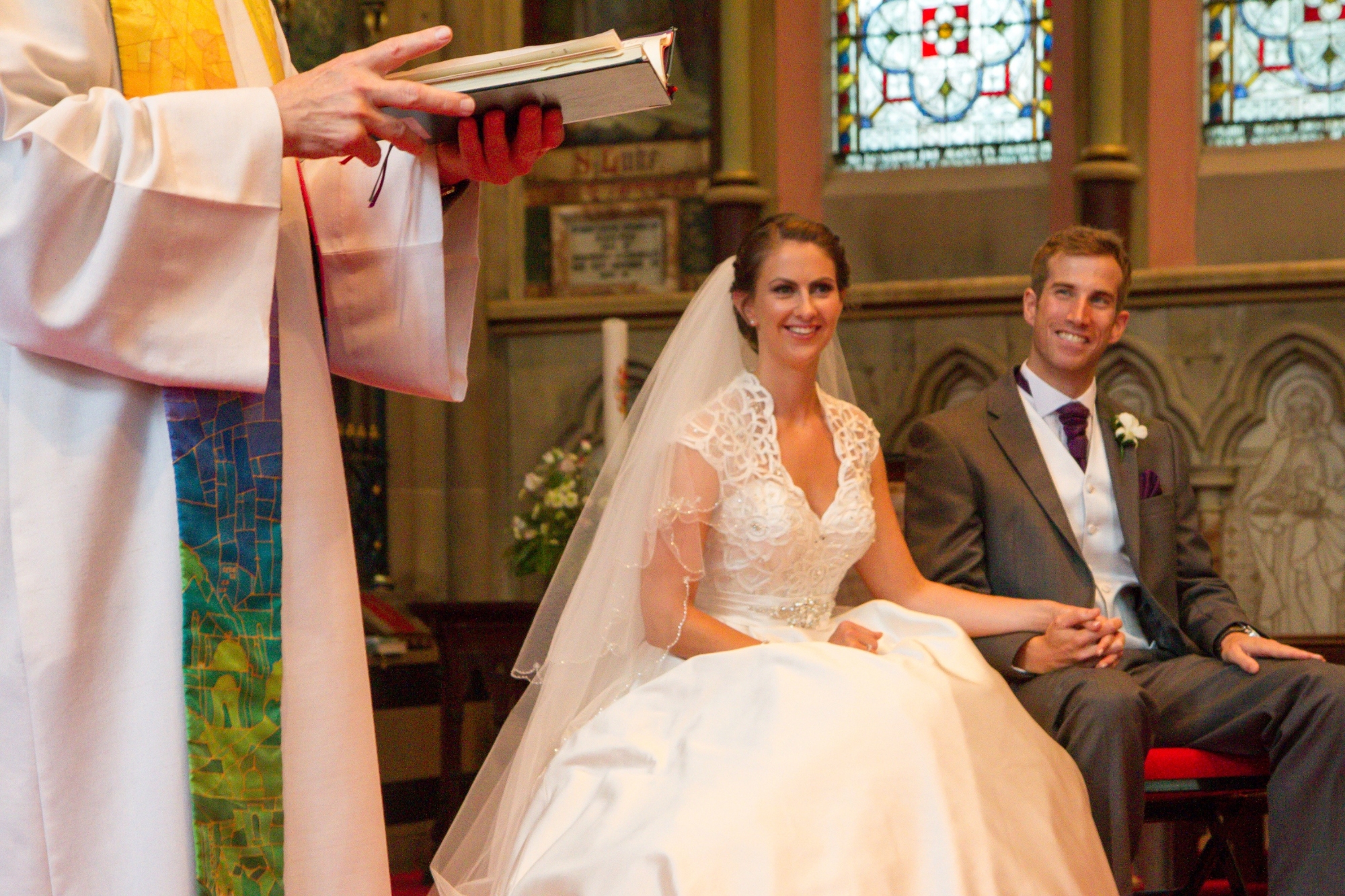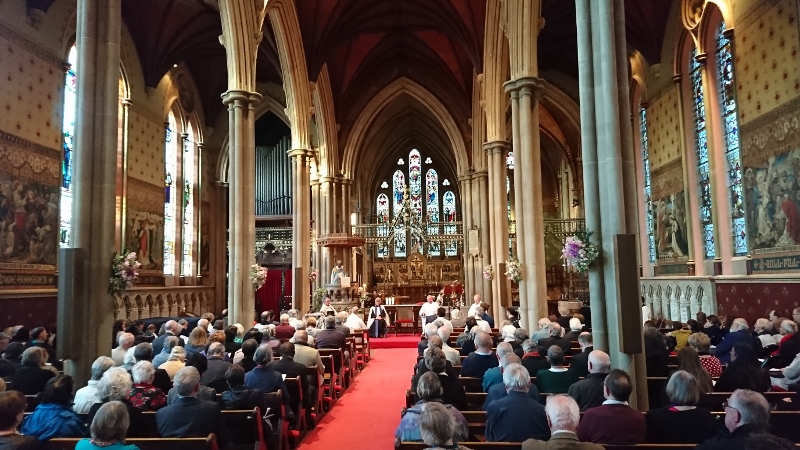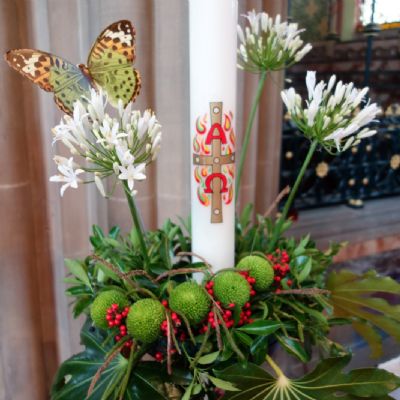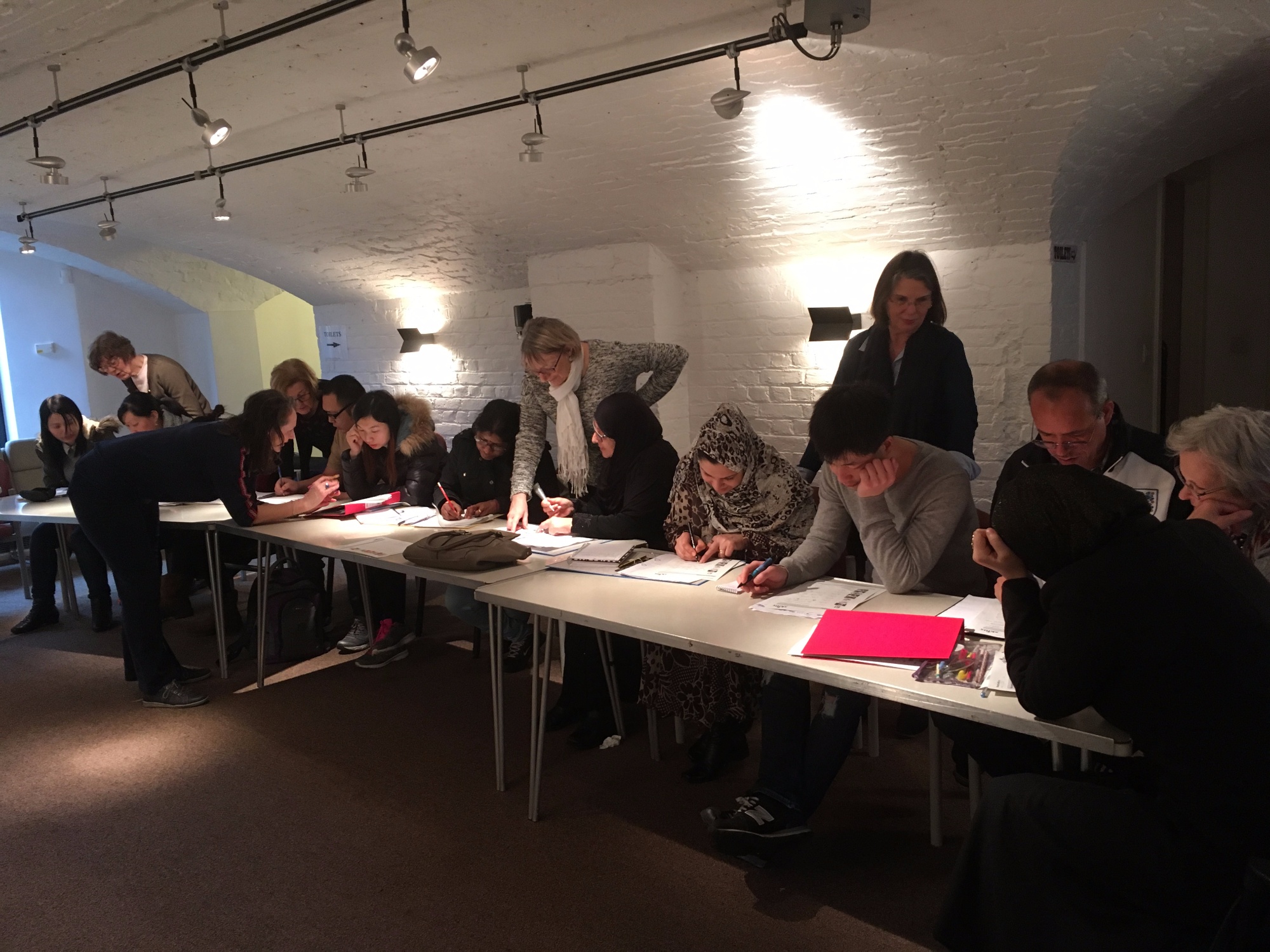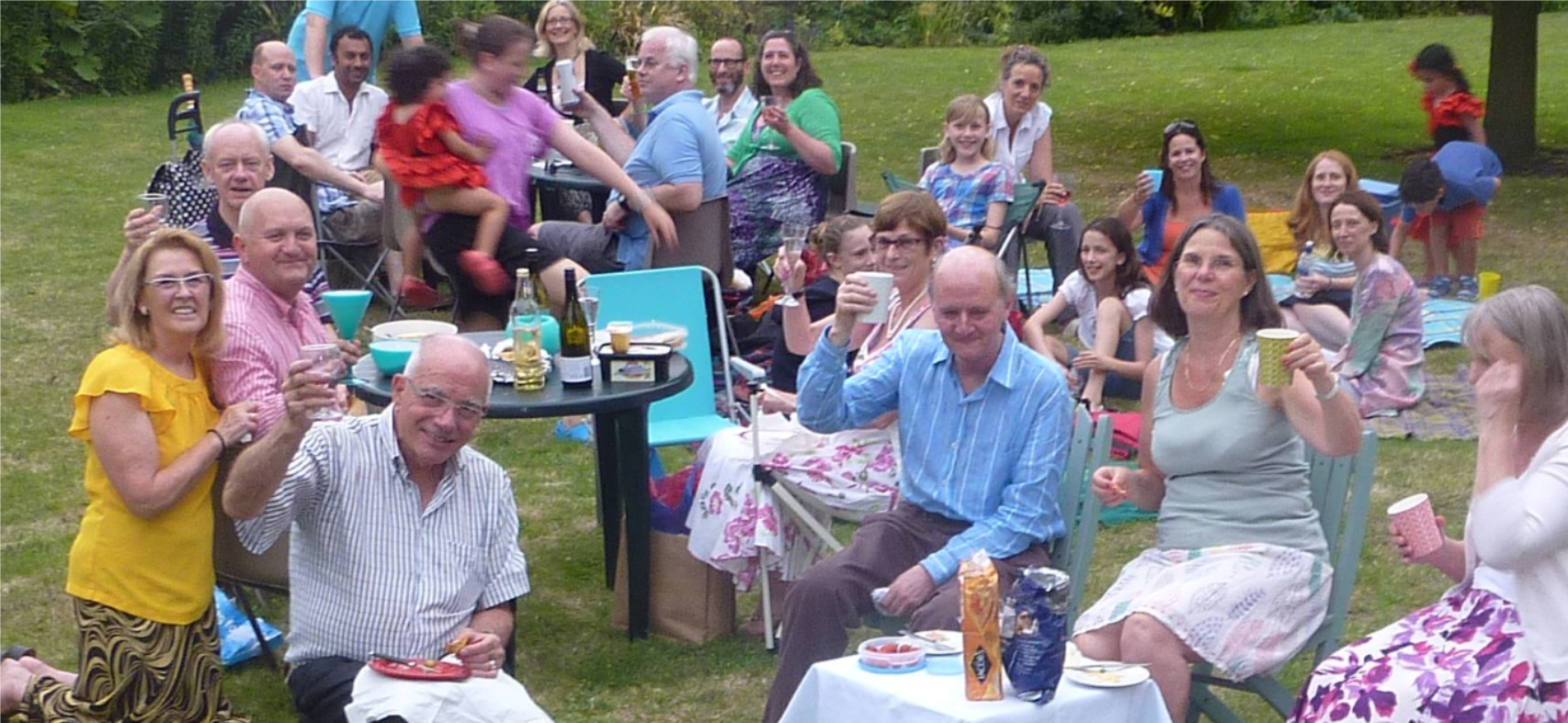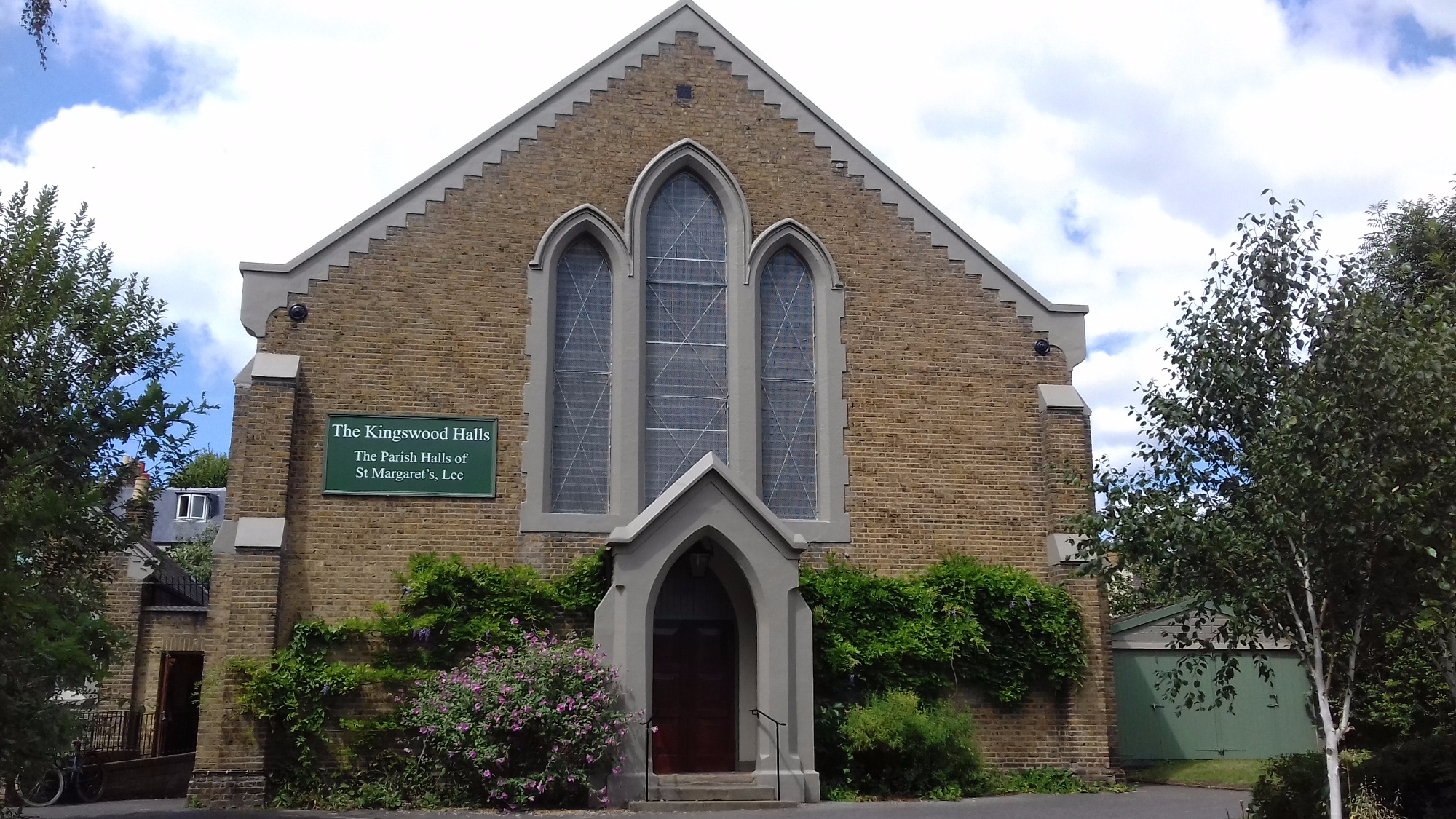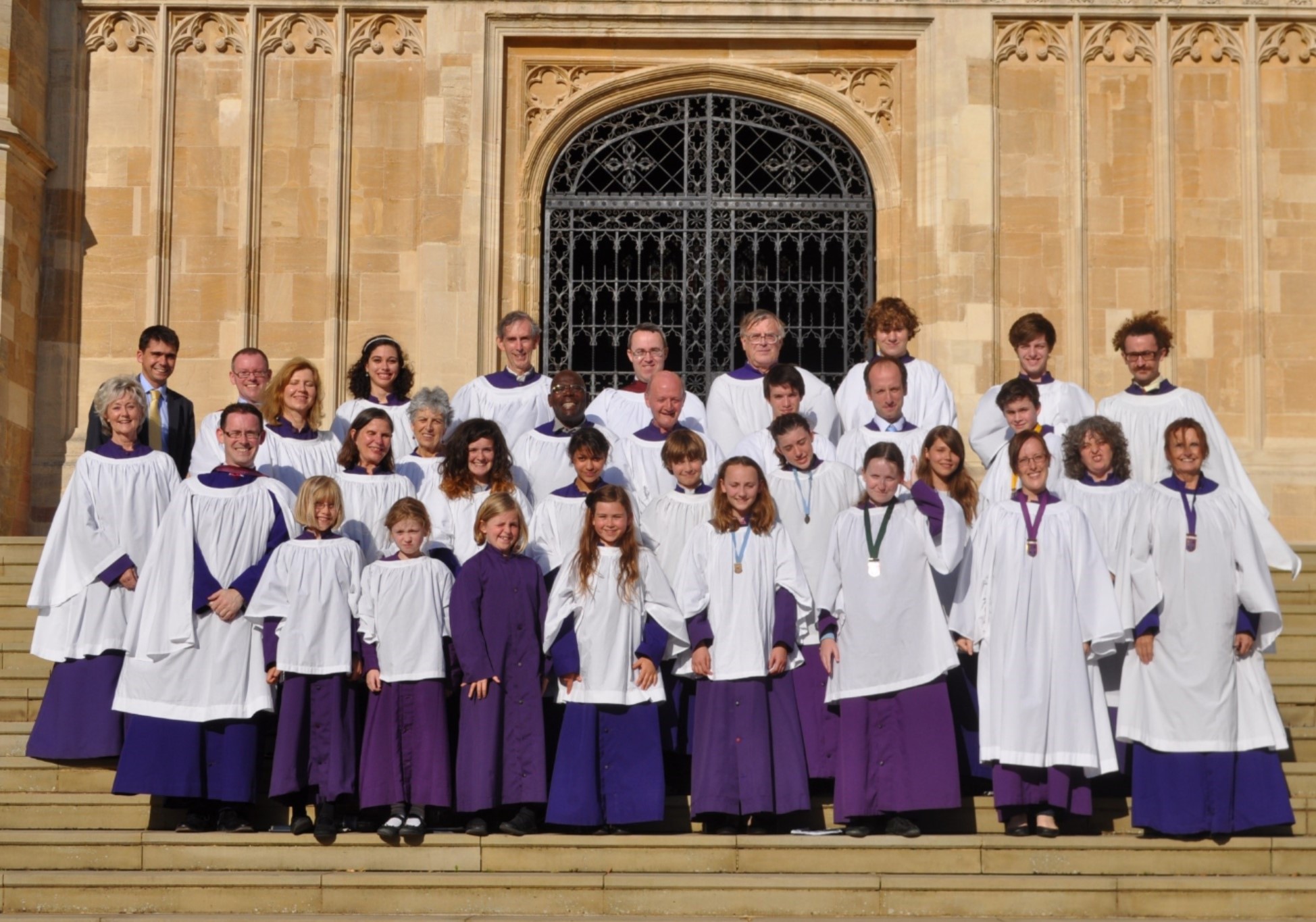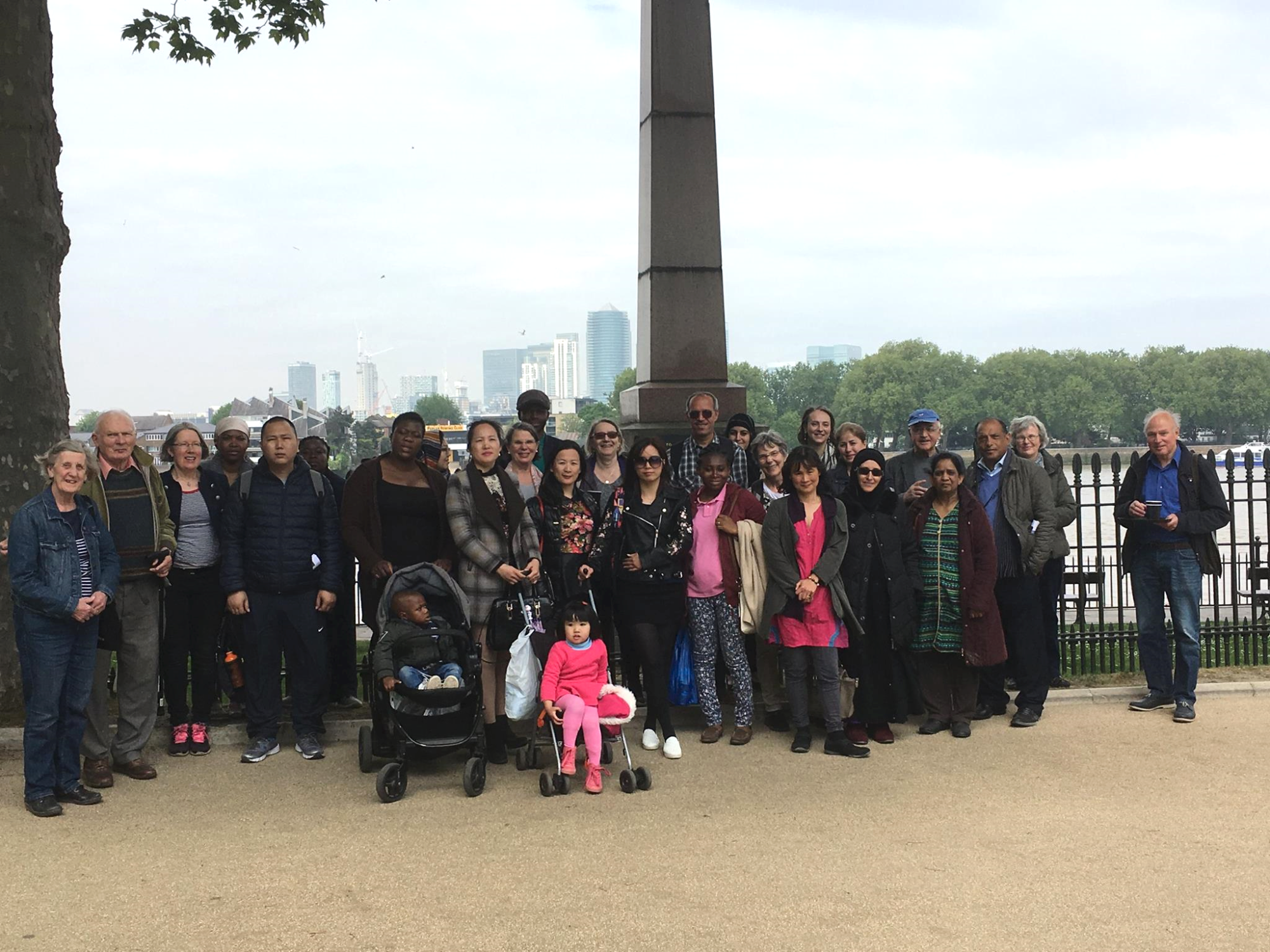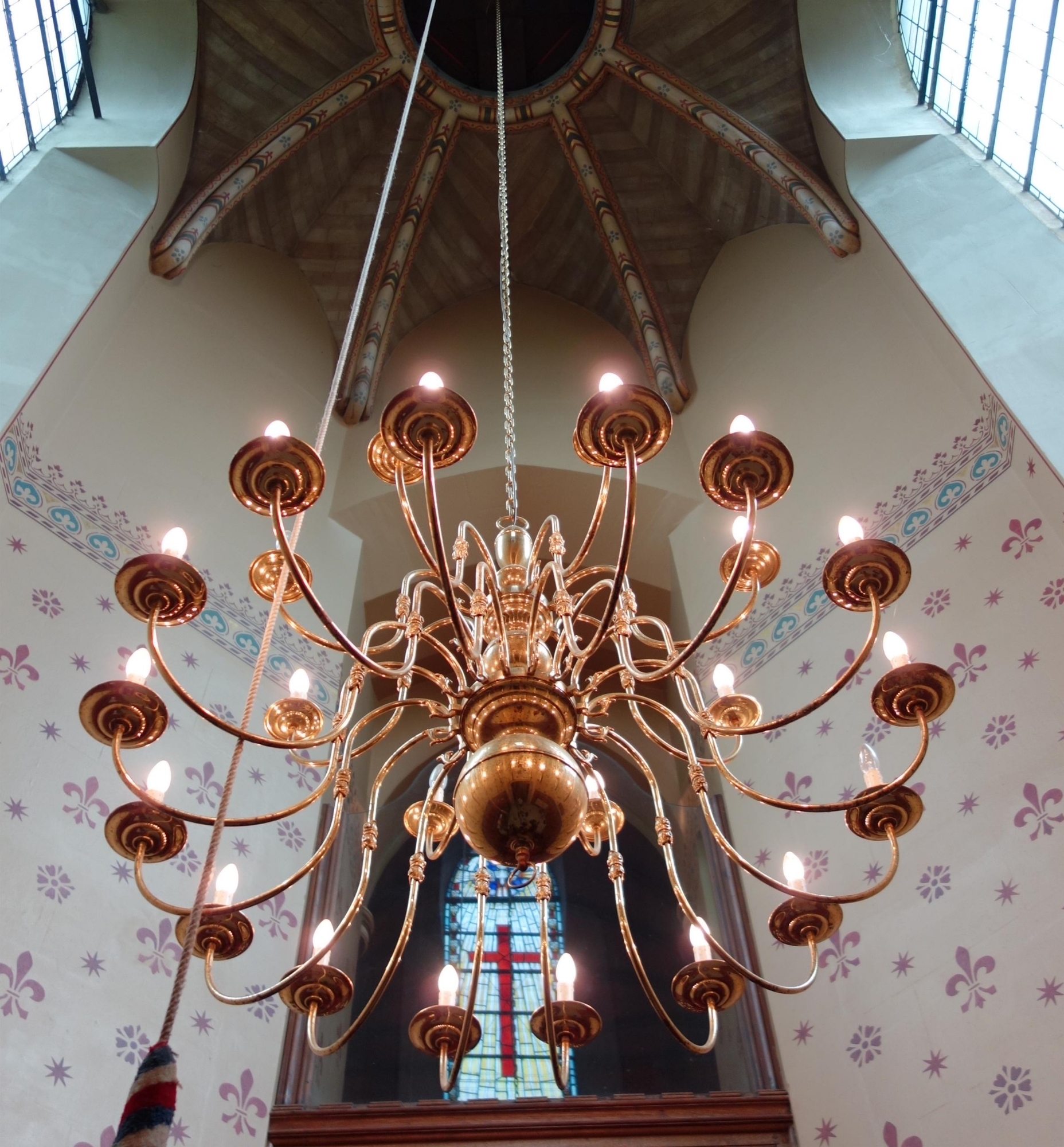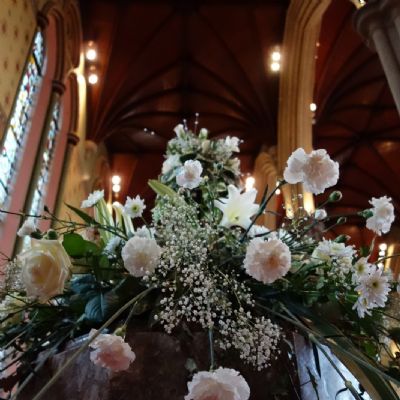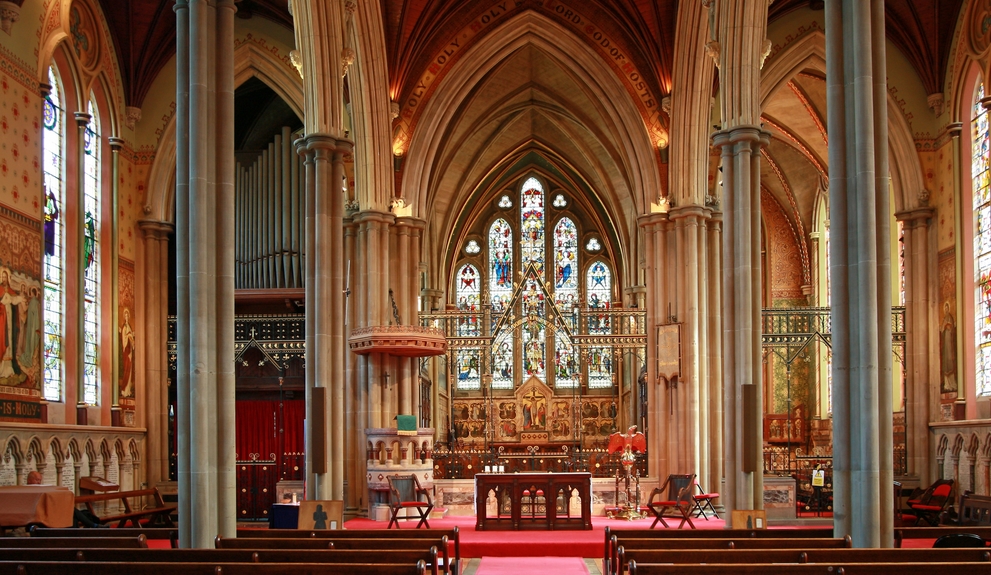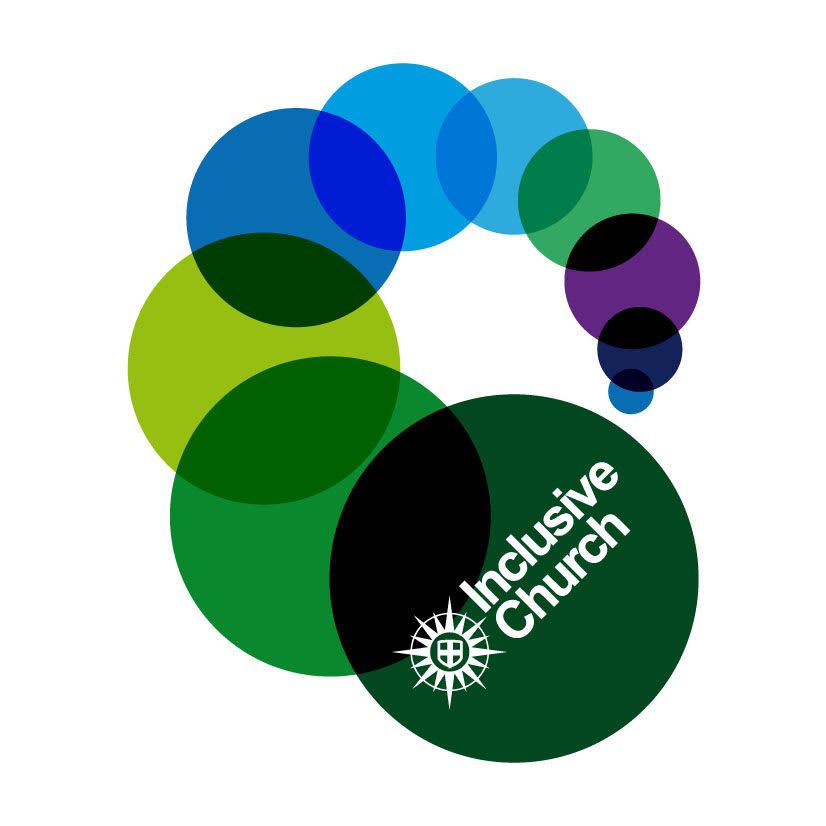2. North Windows and Paintings
2. North Windows and Paintings
Above the north west door is a reminder of the Second World War where fragments of broken glass have been retained.

The modern windows (1953 to 1955) in the north wall replace those lost in the Blitz and show eight outstanding figures in the life of the church in England. See below.
The Early Church The Middle Ages
|
St Columba |
St Augustine | St Edward the Confessor | Stephen Langton |
|
St Columba, having been banished from Ireland, founded a monastery on Iona. At the top of the window is the coat of arms of Scotland, surmounted by the Scottish crown, while the Irish influence is represented by the harp and shamrock. Beneath is a picture showing St Columba’s arrival in Scotland with Iona Abbey in a circle below. |
St Augustine is shown in his Benedictine habit. As the first Archbishop of Canterbury, the arms are placed at the top of the window, whilst those of Italy appear below. Beneath he is shown King Ethelbert, whilst a reminder of his landing at Ebbsfleet is provided by the white horse of Kent. |
Edward the Confessor is seen with a sceptre and ring, while circular illustration shows the building of Westminster Abbey. A kneeling figure can be seen holding an architect’s plan, whilst the shield at the foot of the window contains the Abbey arms. The King’s arms are displayed at the top of the window. In the plain glass quarries the early arms of France recall the Confessor’s Normandy associations and St Peter’s keys link with the dedication of the Abbey. |
Langton is robed as a cardinal. His name headed the list of witnesses when King John signed the Magna Carta at Runnymede. The barons, whose shields can be seen, are Clare, de Vere, de Lacy and Montfichet. The last named became Lord of the Manor of Lee in 1225. The arms of England appear at the top of the window, those of Canterbury in a quarry and Langton’s personal arms are in the base. |


The Reformation The Nineteenth Century
| John Wycliffe | Thomas Cranmer | William Wilberforce | John Keble |
|
Wycliffe was the first person to translate the Bible into English. At the bottom, Wycliffe is seen commissioning his poor preachers at Lutterworth Church. Beneath is old St Paul’s, the scene of his trial for heresy. As master of Balliol, the arms of the college are placed above his head. Those of Lincoln Cathedral, where he was ordained, together with a feather, the badge of his patron, John of Gaunt, are to be found in the quarries. |
Cranmer stands beneath the arms of Jesus College, Cambridge where he was an undergraduate. In the quarries are his arms as Archbishop of Canterbury together with the Tudor rose. Below are scenes of his martyrdom outside Balliol College, Oxford and a view of St Mary’s, the University Church. |
Wilberforce was born in Hull and represented it in Parliament. The arms of the city are shown at the top, together with those of his family. In the quarries are the arms of St John’s College, Cambridge and the York Rose. It was through his passionate campaigning that first, the slave trade, and then, slavery itself, were abolished. Slaves can be seen crossing the River of Salvation and being received by baptism. |
Keble’s Assize Sermon in St Mary’s, Oxford marked the beginning of the Oxford Movement. Above are the arms of Oxford University and below, Keble College. His association with Corpus Christi and Oriel Colleges are recognised in the quarries. |


The wall paintings in the church, along with the stencilling, were also provided by Clayton and Bell who supplied the majority of the windows. With one exception, the paintings are marouflage, a technique whereby, before being fixed to the wall, the work is first painted on canvas mounted on a fixed frame and backed with a compound of lead and zinc.
On the north side the scenes represented are, from left to right:
- The Sermon on the Mount
- The Marriage Feast at Cana
- The Triumphal Entry into Jerusalem
- The Ascension



 Just before going under the organ loft, there is some fine marble arcading with interesting heraldic memorials.
Just before going under the organ loft, there is some fine marble arcading with interesting heraldic memorials.


